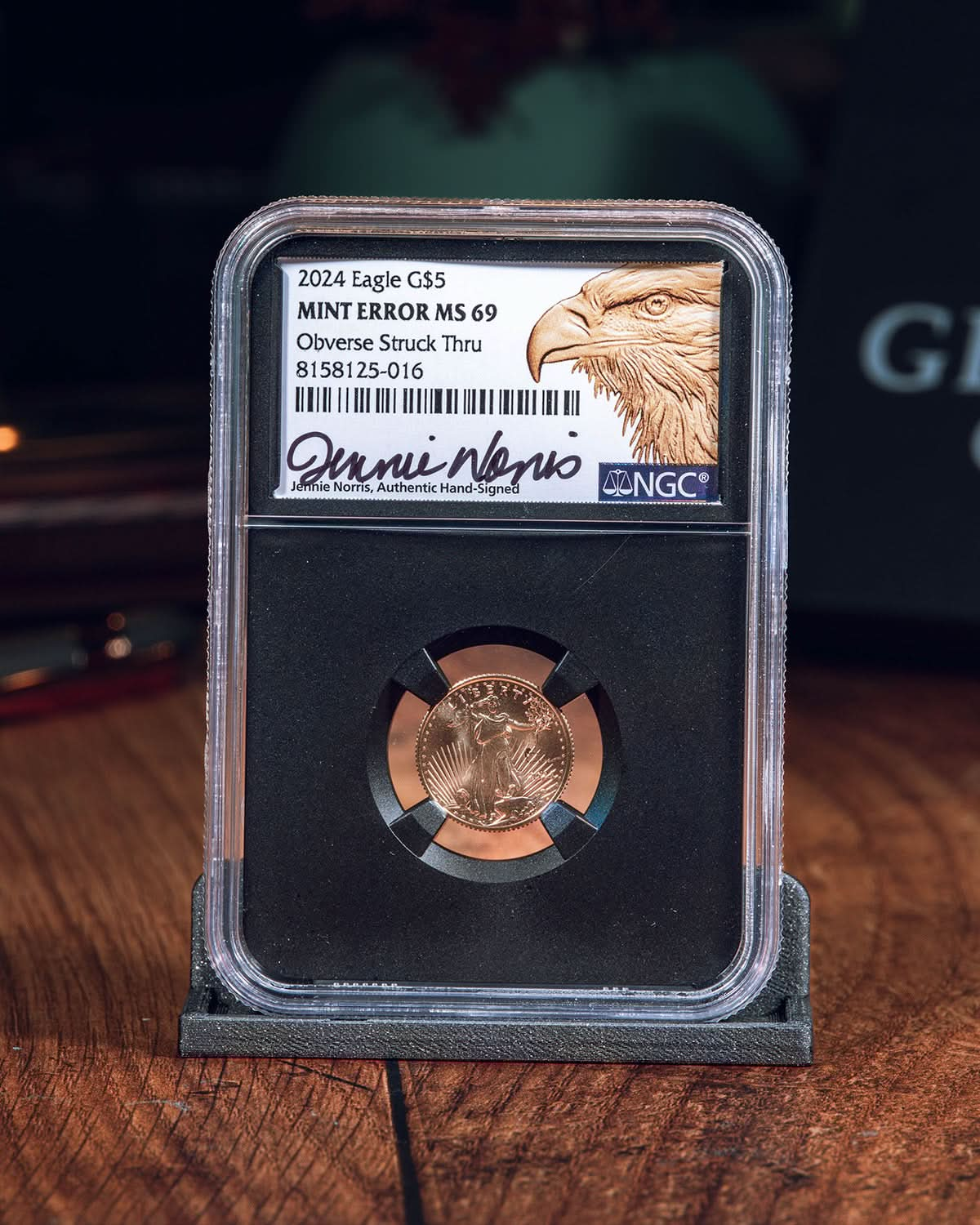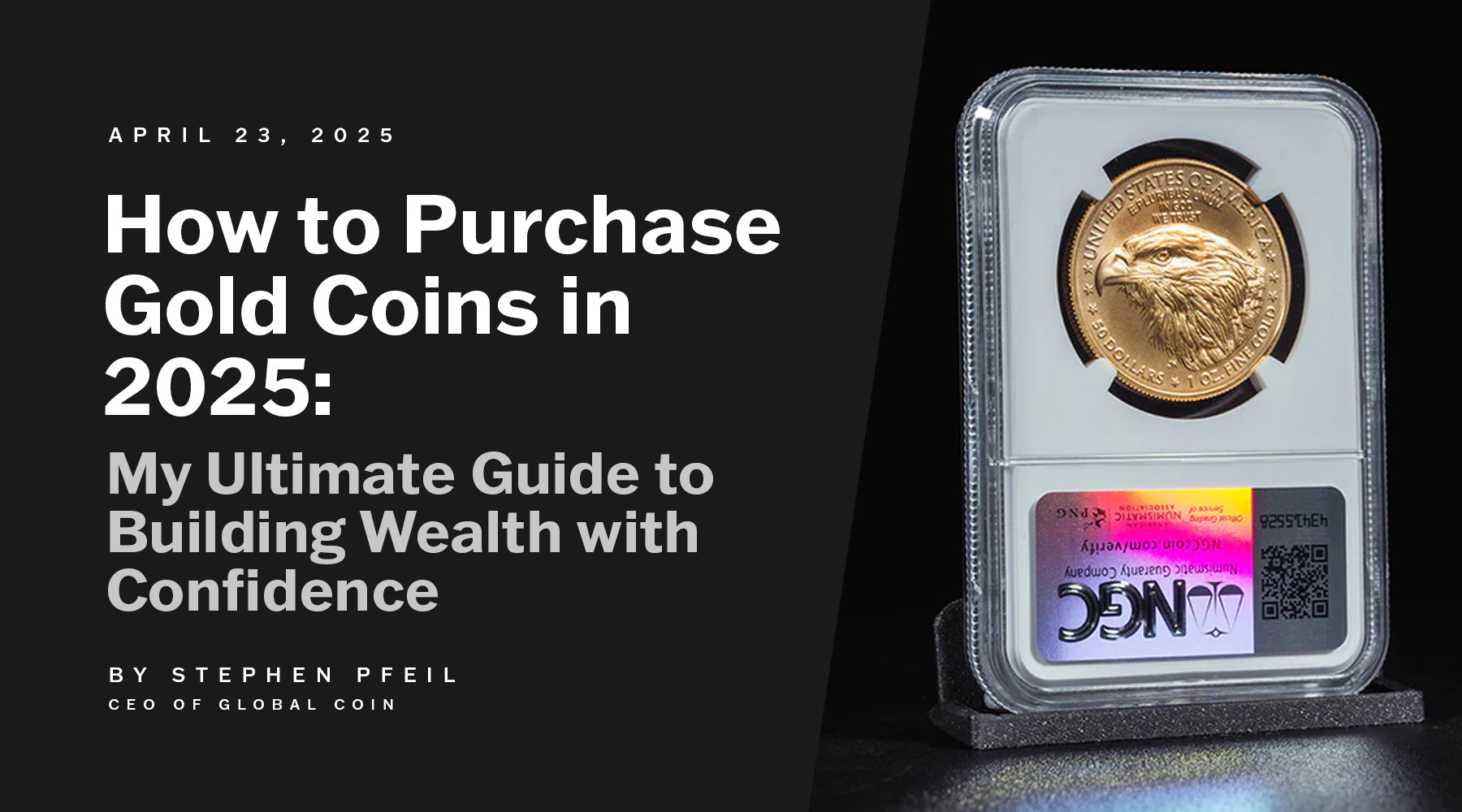Are Rare Coins the Last Untapped Asset Class for Wealth Preservation?
Rare coins are collectible coins that fit into the broader spectrum of asset classes, valued not just for their metal content, like gold or silver, but also for their historical significance, scarcity, and condition. Unlike bullion, which is primarily raw metal bars or ingots, rare coins offer a blend of monetary and numismatic value, making them an intriguing option for wealth preservation.
Brief History of Rare Coin Collecting

Rare coin collecting boasts a rich history that stretches back to ancient civilizations. The hobby has evolved significantly over time, with various periods and styles emerging as collectors sought to preserve pieces of history. From the intricate designs of ancient Greek and Roman coins to the modern-day collectibles, rare coins have long been symbols of wealth and power.
The earliest coin collectors were likely royalty and nobility, who amassed rare and valuable coins as a display of their substantial wealth and status. These early collectors recognized the intrinsic and historical value of coins, often showcasing their collections as a testament to their power and influence.
As trade and commerce expanded, coins became more widely available, and the hobby of coin collecting spread beyond the elite. By the Renaissance, coin collecting had become a popular pastime among scholars and the general population, who were fascinated by the historical and artistic significance of coins.
Today, rare coin collecting is a global phenomenon. Collectors and investors from around the world seek out rare and valuable coins, driven by a passion for history and the potential for financial gain. The hobby continues to thrive, with new discoveries and market trends constantly emerging, making rare coin collecting an ever evolving and exciting pursuit.
Why Rare Coins Matter for Wealth Preservation
Rare coins stand out as a potentially untapped asset class due to their ability to hedge against inflation and market volatility. During times of economic uncertainties, rare coins can provide stability as a reliable store of value. Their fixed supply and growing collector demand can lead to significant appreciation, as seen in cases like the 1907 $20 St. Gaudens Double Eagle. In the context of the global economy, rare coins can be a hedge against fluctuations, making them particularly appealing for investors seeking stability and diversification.
Surprising Detail: Vast Market Disparity
It’s surprising that the rare coin market, while smaller than traditional financial markets, has shown remarkable appreciation for certain coins, with some, like the 1913 Liberty Head Nickel, selling for over $3 million in 2018, highlighting their potential as a high-return investment. Unlike traditional ETFs that offer diversified exposure to various asset classes and sectors through broad market indices, rare coins provide a unique appreciation potential due to their historical and collectible value.
Key Points
-
Rare coins are a unique option for wealth preservation, differing from bullion due to their historical and collectible value.
-
They offer dual value (monetary and historical), scarcity-driven appreciation, and protection against market volatility.
-
Grading is crucial for determining coin value, and high-net-worth investors can benefit from their diversification potential.
-
Compared to other collectibles, rare coins are compact, objectively valued, and have a long-established market.
Comprehensive Analysis of Rare Coins for Wealth Preservation
This detailed survey explores the potential of rare coins as an untapped asset class for wealth preservation, comparing them to other investment assets like gold, silver, and other precious metals. It examines their differences from bullion, dual value proposition, the role of scarcity, protection against market volatility, grading importance, insights for high-net-worth investors, comparisons with other collectibles, portfolio-building strategies, and case studies of appreciated coins.
Defining Rare Coins and Their Distinction from Tangible Assets
Rare coins are collectible coins that derive value from both their metal content and their historical, scarcity, and condition attributes. Bullion, such as gold or silver bars, is valued primarily for its metal content and serves as a hedge against inflation or economic uncertainty. The key difference lies in the numismatic value of rare coins, which includes factors like age, rarity, and historical context, offering a dual investment appeal.
The gold market influences the value of gold coins by affecting the pricing volatility and investment strategies. Factors such as government regulations and economic uncertainties can impact the dynamics of the gold market, making gold a stable investment.
-
Bullion Characteristics: Raw metal, valued for intrinsic metal content, used for inflation hedging.
-
Rare Coin Characteristics: Collectible, valued for metal and historical significance, potential for appreciation.
This distinction positions rare coins as a unique asset class with both monetary and collectible dimensions.
The Dual Value Proposition: Historical and Monetary
Rare coins offer two types of value:
-
Monetary Value: Derived from the metal content, such as gold or silver, which provides a baseline value tied to market prices. For example, a gold coin’s value includes the current price of gold, offering stability during economic uncertainty. Economic growth can also impact the value of rare coins by influencing market demand and metal prices.
-
Historical Value: Stemming from the coin’s age, rarity, and historical context, which can appreciate due to collector demand. This value is less correlated with metal prices and more with market sentiment for collectibles.
Fluctuations in gold prices can significantly affect the monetary value of gold coins, as these prices respond to economic indicators, investor sentiment, and geopolitical events. This dual nature allows rare coins to perform well in diverse economic conditions, combining the safety of precious metals with the growth potential of collectibles.
The Power of Scarcity in Rare Coin Investments as a Valuable Asset
Scarcity is a fundamental driver of value in the rare coin market. Gold remains a preferred choice for investors during times of economic uncertainty, highlighting its stability. Unlike stocks or bonds, the supply of specific rare coins is fixed; once a coin is lost or destroyed, its availability decreases, potentially increasing its value. For instance, coins in excellent condition are rarer, as fewer survive over time without wear. This scarcity can lead to significant price appreciation as demand from collectors and investors grows, making rare coins a powerful store of value and hedge against inflation.
Protection Against Market Volatility and Economic Uncertainty
Traditional financial markets, including stocks, bonds, and real estate, can experience significant volatility due to economic cycles and global events. Shifts in global markets influence the stability and appeal of rare coins, making them a reliable investment during uncertain times. Rare coins, as physical assets with intrinsic value and collectible appeal, may offer stability during such turbulence. Their value is not directly correlated with the performance of financial markets, providing diversification benefits. This decoupling from traditional markets makes rare coins an attractive option for investors seeking to mitigate risk during economic downturns. Fluctuations in silver prices can also impact the value of silver coins, adding another layer of consideration for investors.
The Critical Role of Grading in Determining Coin Value
Grading is essential in the rare coin market, as it assesses the condition of coins and significantly impacts their value. Understanding grading can help investors build a more robust investment portfolio by ensuring they select coins that contribute to diversification and stability. Professional grading services, such as the Professional Coin Grading Service (PCGS) and the Numismatic Guarantee Corporation (NGC), assign grades ranging from poor to perfect based on factors like wear, luster, and strike quality. Higher-grade coins are more valuable due to their rarity in excellent condition. Investors must understand these grading systems to make informed decisions, ensuring they purchase coins with verified value and potential for appreciation.
Insights for High-Net-Worth Investors
High-net-worth investors often seek unique investment opportunities that offer both financial returns and personal satisfaction. Rare coins can serve as passion investments, combining the thrill of collecting with potential financial gains. Key considerations include:
-
Liquidity: While the rare coin market has improved in liquidity, it's less liquid than stock or bond markets, requiring patience for sales.
-
Storage and Insurance: Proper storage (e.g., in safes or vaults) and insurance are necessary to protect against loss or damage, adding to costs.
-
Reputable Dealers: Working with reputable dealers and advisors ensures authenticity and fair pricing, crucial for high-value investments.
These factors make rare coins a viable option for diversification, offering both tangible assets and potential appreciation.
Comparative Analysis: Rare Coins vs. Other Collectibles
When compared to other collectibles like art, wine, or sports memorabilia, rare coins have distinct advantages:
-
Compact and Easy to Store: Coins are small and can be stored in safes or vaults, unlike large artworks or wine collections requiring climate-controlled environments.
-
Objective Valuation: The value of rare coins is more objectively determined based on metal content and grading, reducing subjectivity compared to art valuation.
-
Long History and Established Market: The rare coin market has a long history with established auction houses and dealers, providing transparency and reliability.
However, rare coins might lack the glamour associated with art or the cultural appeal of wine, and the entry cost for high-value coins can be significant. Despite these, their compact nature and objective valuation make them a practical choice for investors.
Emerging Markets for Rare Coins
The landscape of rare coin collecting has been transformed by emerging markets, offering new opportunities for collectors and investors alike. These markets include online marketplaces, auction houses, and specialized dealers, each providing a unique platform for acquiring rare coins.
Specialized dealers, including coin shops and numismatic firms, offer a wealth of expertise and a diverse selection of rare coins. These dealers provide personalized service and in-depth knowledge, helping collectors and investors make informed decisions. By working with reputable dealers, investors can ensure the authenticity and quality of their acquisitions, enhancing their investment strategies.
In summary, the emerging markets for rare coins have expanded the opportunities for collectors and investors, making it easier to access and invest in this unique asset class.
Building Portfolios Around Investment-Grade Coins
Building a portfolio of rare coins requires a strategic approach:
-
Education: Learn about the market, different types of coins (e.g., by period, country, metal), and their historical significance through resources like the American Numismatic Association (American Numismatic Association).
-
Set Clear Goals: Determine investment objectives, whether for wealth preservation, appreciation, or a combination, aligning with risk tolerance and time horizon.
-
Diversification: Spread investments across different coin types to minimize risk, such as U.S. coins, ancient coins, or modern commemoratives.
-
Reputable Sources: Buy from well-known dealers or auction houses, ensuring coins are graded and authenticated by services like PCGS or NGC.
This structured approach helps investors build a balanced portfolio that leverages the potential of rare coins.
Case Studies: Rare Coins That Have Appreciated Over Time
Several rare coins have demonstrated significant appreciation, illustrating their investment potential:
-
1907 $20 St. Gaudens Double Eagle: Designed by sculptor August St. Gaudens, this coin is highly sought after by collectors. High-grade examples have seen prices rise from tens of thousands to over $1 million at auction, reflecting strong demand (CoinWeek).
-
1913 Liberty Head Nickel: Only five known examples exist, making it one of the rarest U.S. coins. One sold for over $3 million in 2018 at a Stack's Bowers auction, showcasing its exponential value growth (Stack's Bowers).
-
1804 Silver Dollar: Known as the "King of American Coins," only a few specimens exist, with rich historical significance. Prices have reached millions at auction, driven by rarity and collector interest (Heritage Auctions).
These case studies highlight the potential for rare coins to deliver substantial returns, reinforcing their role as a wealth preservation asset.
Collecting and Appreciating Rare Coins
Collecting rare coins is a rewarding endeavor that requires a blend of knowledge, patience, and dedication. To succeed in this hobby, collectors must be adept at identifying and authenticating coins, as well as understanding their historical and cultural significance.
One of the key aspects of appreciating rare coins is understanding their condition, rarity, and provenance. The condition of a coin, often referred to as its grade, is a critical factor in determining its value. Coins in better condition, with minimal wear and strong luster, command higher prices in the secondary market.
Rarity is another crucial element that influences a coin’s value. Coins that are scarce or have limited mintage are more sought after by collectors and investors, driving up their market value. The rarity of a coin can be due to various factors, including historical events, production errors, or limited distribution.
Provenance, or the history of a coin’s ownership, also plays a significant role in its value. Coins that have been part of notable collections or owned by famous collectors often carry a premium. The documented history of a coin adds to its allure and can significantly enhance its market appeal.
For collectors and investors, appreciating rare coins involves more than just understanding their physical attributes. It requires a deep appreciation of their historical context, cultural significance, and market trends. By immersing themselves in the world of numismatics, collectors can gain a greater understanding of the stories behind the coins and the factors that drive their value.
In conclusion, collecting and appreciating rare coins is a multifaceted pursuit that combines historical knowledge, market insight, and a passion for tangible assets. Whether for personal satisfaction or as part of an investment strategy, rare coins offer a unique and valuable asset class for those willing to delve into their rich and fascinating world.
Rare Coins: The Exclusive Asset Class for Discerning Investors
At Global Coin, we specialize in curating rare, high-value coins that offer more than just intrinsic metal worth—they represent historical significance, scarcity, and exclusivity. This blog post, Are Rare Coins the Last Untapped Asset Class for Wealth Preservation?, unironically aligns seamlessly with our mission to empower collectors and investors by providing access to amazing and exclusive coins at an excellent value.
Our competitive advantage lies in leveraging exclusive access to billions of dollars in rare coin inventory. Global Coin specializes in a strategic approach that ensures that each coin we offer for sale meets the highest standards of authenticity, rarity, and investment potential. For those seeking to diversify their portfolios with a scarce, appreciating asset, Global Coin is the trusted partner in navigating the world of elite numismatics.
Conclusion and Investment Implications
Rare coins offer a unique combination of historical significance, scarcity, and intrinsic value, positioning them as an untapped asset class for wealth preservation. Their dual value proposition, ability to protect against market volatility, and potential for appreciation make them a compelling option for investors seeking diversification. By understanding grading, working with reputable dealers, and building a strategic portfolio, investors can leverage rare coins to achieve both financial and personal satisfaction. For those interested in exploring this market further, consider reaching out to a trusted numismatic dealer for personalized guidance.








Leave a comment
This site is protected by hCaptcha and the hCaptcha Privacy Policy and Terms of Service apply.